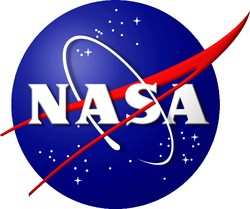Mon, Sep 21, 2009
Each School Could Receive $5 Million Over As Many As Five
Years
 NASA has selected six universities that serve large numbers of
minority and underrepresented students to receive research grants
totaling nearly $30 million. The funding will help the universities
establish significant, multi-disciplinary scientific, engineering
and commercial research centers that contribute substantially to
NASA programs.
NASA has selected six universities that serve large numbers of
minority and underrepresented students to receive research grants
totaling nearly $30 million. The funding will help the universities
establish significant, multi-disciplinary scientific, engineering
and commercial research centers that contribute substantially to
NASA programs.
The six universities selected are:
- California State University in Long Beach for the Center for
Human Factors in Advanced Aeronautics Technologies
- Delaware State University in Dover for the establishment of a
NASA Optical Sciences Center for Applied Research
- North Carolina A & T State University in Greensboro for the
Center for Aviation Safety
- North Carolina Central University in Durham for the NASA Center
for Aerospace Device Research and Education
- University of Texas in Brownsville for the Center for
Gravitational Wave Astronomy
- University of Texas in El Paso for the Center for Space
Exploration Technology Research
Each university will receive up to $1 million per year for up to
five years based on performance and availability of funds.
These awards provide funding that continues NASA's commitment of
achieving a broad based, competitive aerospace research and
technology development capability among the nation's Historically
Black Colleges and Universities and other minority schools.
Through the NASA Group 5 University Research Center awards
program, NASA seeks to foster new aerospace science and technology
concepts and expand the nation's base for aerospace research and
development. The program also aims to develop mechanisms for
increased participation in NASA's research by faculty and students
from Historically Black Colleges and Universities and other
minority universities. The goal is to increase the number of
underrepresented minorities who obtain advanced degrees in science,
technology, engineering and mathematics.
NASA's Office of Education funded the awards. The six
institutions were selected from among 35 that submitted proposals.
Selections were based on proposal reviews by scientists and
educators from the academic community, private industry and
NASA.
Through this and the agency's other college and university
programs, NASA continues to invest in the nation's education with a
focus on developing a future workforce trained in critical science,
technology, engineering and mathematics skills.
More News
A Puff Of Smoke Came Out From The Top Of The Engine Cowling Followed By A Total Loss Of Engine Power On May 9, 2025, about 1020 mountain daylight time, an experimental amateur-buil>[...]
From 2022 (YouTube Edition): Jenny, I’ve Got Your Number... Among the magnificent antique aircraft on display at EAA’s AirVenture 2022 was a 1918 Curtiss Jenny painstak>[...]
Very High Frequency (VHF) The frequency band between 30 and 300 MHz. Portions of this band, 108 to 118 MHz, are used for certain NAVAIDs; 118 to 136 MHz are used for civil air/grou>[...]
“From approximately November 2021 through January 2022, Britton-Harr, acting on behalf of AeroVanti, entered into lease-purchase agreements for five Piaggio-manufactured airc>[...]
From 2008 (YouTube Edition): US Fish and Wildlife Service Chooses The Kodiak To Monitor Waterfowl Populations Waterfowl all over North America may soon have to get used to a new ab>[...]
 NTSB Prelim: Lee Aviation LLC JA30 SuperStol
NTSB Prelim: Lee Aviation LLC JA30 SuperStol Classic Aero-TV: Curtiss Jenny Build Wows AirVenture Crowds
Classic Aero-TV: Curtiss Jenny Build Wows AirVenture Crowds ANN's Daily Aero-Term (05.30.25): Very High Frequency (VHF)
ANN's Daily Aero-Term (05.30.25): Very High Frequency (VHF) Aero-News: Quote of the Day (05.30.25)
Aero-News: Quote of the Day (05.30.25) Classic Aero-TV: Quest Kodiak Enhances Migration Monitoring Programs
Classic Aero-TV: Quest Kodiak Enhances Migration Monitoring Programs



